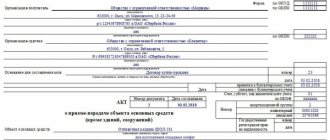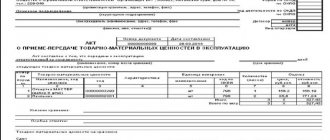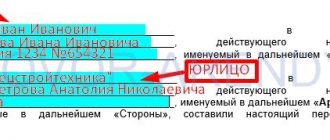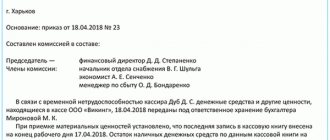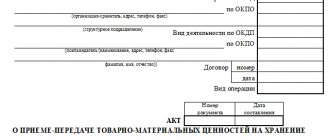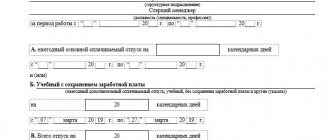An electronic digital signature or electronic digital signature will allow you to optimize the workflow within the company and outside it, as well as spend much less time and effort on document preparation. Today, electronic document management and the method of protecting information with a digital signature have found quite wide application in systems for exchanging documents with counterparties, as well as submitting information and reports to regulatory authorities. When transferring an electronic signature to its owner, the certification center draws up an EDS acceptance and transfer certificate. Some companies also practice drawing up such a document to transfer the signature to a third party. We will consider how legal this is later in the article.
What is digital signature and why is it needed?
An electronic signature or electronic signature is an analogue of a personal signature of an individual, which can be used to sign electronic documents. An electronic signature is proof that a document was signed by a specific person. There are the following types of digital signature:
| Types of digital signature | Detailed description |
| Simple | pairs of login - password, confirmation code and scratch card. The purpose of the signature is to confirm the signer. For example, when paying via the Internet, the bank must receive confirmation that the transfer of funds is carried out by a specific person. A simple signature is generated by the program in which the individual works. Such a signature has no legal force and works simply on behalf of the individual. Such a signature is absolutely not suitable for signing a document, for example, an agreement. |
| Reinforced unskilled | An unqualified signature (NES) is a more complex and secure signature. It confirms that the document was signed by a specific person and provides a guarantee that no one subsequently made changes to the document. This type of signature is created by the system in which documents are signed. For example, if an individual sends an income statement to the tax authority, the Federal Tax Service will create such a signature on its website completely free of charge. |
| Reinforced qualified | An enhanced qualified signature (ECS) is a signature that is required by government agencies to submit reports. CEP is the most secure signature, which is encrypted with special certificates. That is why government agencies can accept it on documents of legal entities. |
Important! All signature forks differ from each other in reliability and the possibility of their use
How to obtain an electronic signature
To obtain an electronic digital signature, you will need to contact a certification center (CA) accredited by the Ministry of Telecom and Mass Communications (currently there are 456 such CAs in Russia). Such centers use special encryption tools, which guarantee that the signature cannot be hacked.
The certification authority issues a signing certificate as well as a key. It is the certificate that confirms that the key belongs to a specific person. It contains the owner’s data, the signature key, as well as the scope of application of the signature, that is, those sites that accept this signature. You need to install an electronic certificate on your computer.
The key is a code that is recorded on an electronic medium. In this case, a flash drive, memory card or bank card containing a chip can be used as a storage medium. In order for the owner of the signature to be able to sign documents, a cryptoprovider must be installed on the computer, which is an intermediary program between the electronic signature and the OS (
Rules for transferring the key and password to the accountant from the client bank program
How to obtain and subsequently use an enhanced digital key to certify documentation and reports is described below.
An electronic digital signature is issued in the name of a specific person - a director or other authorized employee. In practice, there are disputes over whether the right to use a digital signature can be transferred from one person to another. Disputes arise because this issue is not regulated by law.
This information can be obtained from explanations of the parties and third parties, testimony of witnesses, written and material evidence, audio and video recordings, and expert opinions.
The bottom line is that an electronic signature is an electronic analogue of a written signature, and transferring the authority to use it is the same as transferring the principal’s hand to an authorized person for the purpose of using it to sign documents.
This information can be obtained from explanations of the parties and third parties, testimony of witnesses, written and material evidence, audio and video recordings, and expert opinions.
In this case, a so-called EDS transfer acceptance certificate is drawn up, which details the powers of the person who received the electronic certificate.
Transferring a digital signature to another person within the company
Now let's move on to the second option. It is immediately worth noting that it cannot be called completely legal, since the digital signature determines the powers of a specific person, and not third parties to whom it was transferred independently . All responsibility, even if the signature is transferred, remains with its official owner.
Even if the head of the company issues orders and instructions and signs acts of acceptance and transfer of digital signatures, such documents do not have legal force. The person for whom the digital signature was originally issued will be responsible for documents signed using an electronic signature.
It should also be remembered that such transfer of digital signature may be regarded as negligence or abuse of authority. If the fact of using the electronic signature of a dismissed employee is revealed, this may be regarded as a criminal offense. Especially if the signing of documents was associated with the theft of funds.
Documentation of the fact of transfer
It is important to note that when they talk about the transfer of digital signature under a deed, we can talk about two different situations:
- Receipt from a certification center.
- Transfer within the enterprise to another person other than the one for whom the registration was originally made.
In the first case, an agreement was signed to perform work and provide services. The result of its execution was the transfer of an electronic digital signature, a key and the establishment of the applicant’s right to use. In addition, the center provides maintenance during the period for which it was provided.
The second option is not completely legal. After all, the EDS key actually determines the powers given to a specific person, and not to the one to whom he semi-officially transferred it, Art. 6 of Law 63-FZ. In this case, responsibility remains with the official owner of the signature. You need to understand that no orders or powers of attorney from management will have legal force.
Using the crypto signature of an employee who has already been fired, depending on the motives and the extent of the damage caused, may be classified as a criminal offense. Especially if it concerns the theft of funds.
In order to record the fact that an enterprise has received an electronic digital signature, a primary accounting document is needed that confirms this business transaction. Usually, an act of acceptance and transfer is used for this purpose.
It is important to note that the transfer of a signature is not regulated by law. However, without this or a similar document, there is no official reason to believe that the digital signature now belongs to the customer company and can be used in accordance with its purpose. From the moment the transfer is formalized in writing, responsibility for the use of the software and crypto signature passes to the customer.
If we talk about reassignment within the enterprise to another person, then this can be done not only with the help of an act of acceptance and transfer, but also through an order for the enterprise. However, the real owner of the signature will still remain the manager.
In practice, if the transfer occurs within the company, then the employee is given a USB key or other tangible medium on which the secret encryption key is recorded.
The service center gives the client a more impressive package of documents:
- act or invoice;
- flash drive with recorded software, certificate and signature itself;
- service contract;
- instructions for use.
When registering the fact of transfer of the right to own a cryptosignature, the following must be indicated in the act:
- The exact name of the certification center.
- The name of the company of the recipient of the electronic key.
- List of documents and material assets that are transferred.
- A statement that they have actually been transmitted with a date.
- Stamps and signatures of the parties are affixed with a decoding of the authorized person of the customer and the contractor.
Documents required to obtain an electronic signature
To obtain an electronic signature you will need to present the following documents:
- application for obtaining an electronic signature;
- a notarized copy of the registration certificate;
- original or notarized copy of an extract from the Unified State Register of Legal Entities (extract period no more than 1 month);
- certified copy of TIN;
- a copy of the order on the appointment of a manager;
- for a legal entity, copies of statutory documents are provided;
- Entrepreneurs will need to provide a certificate from the Unified State Register of Individual Entrepreneurs, a copy of the TIN, and a certificate of state registration.
Important! The CA takes up to 3 days to produce a digital signature.
Certificate of acceptance and transfer of digital signature
In order for the fact of acceptance and transmission of an electronic signature to be recorded, it will be necessary to draw up a primary accounting document confirming this type of transaction. The act of acceptance and transfer of digital signature is usually used as such a document. However, it should be remembered that the procedure for transferring an electronic signature to its owner is not regulated in any way. Immediately from the moment the transfer has been completed, responsibility for the use of the signature and software passes to its owner.
Transferring an electronic signature to another person in practice
The provisions of 63-FZ are the same for all three types of electronic signature. However, the easiest way to do this is with a simple electronic signature. If necessary, everyone can provide the other with their login and password, say, for e-mail. This will not entail any consequences until the user begins to perform prohibited actions (for example, sending inappropriate materials). In the case of qualified and unqualified EP, the consequences of the transfer may be more serious. Therefore, it makes the most sense for each company representative to acquire a personal electronic signature. The list of documents that employees can draw up using the director’s key must be clearly formulated. In other cases, an accountant or a representative of another position will be able to use his own key and be responsible for his own actions.
Materials that are transferred to the customer by digital signature
When transferring the digital signature by the certification center, the customer is given the following package of documents:
- certificate of acceptance and transfer of digital signature;
- USB flash drive with software, signature certificate and signature itself;
- signed service agreement;
- a reminder about the procedure for using digital signatures.
When signing the acceptance certificate, you should pay attention to what details it contains. The document must contain the following:
- name of the certification center;
- name of the company receiving the digital signature;
- list of documents and valuables to be transferred under the act;
- fact of transfer and indication of the exact date;
- signatures and transcripts of signatures of the parties.
Responsibility for assigning someone else's electronic signature
Unfortunately, in practice there are often situations where unscrupulous employees falsify documents to their advantage, using the director’s digital signature. The arbitration court in such a case has its own nuances. The legal owner has no right to accuse the defendant of using the digital signature without his knowledge, since this situation itself will be regarded by the court as negligence and oversight of the plaintiff. It is prohibited by law to transfer the key to another person, and in practice it is the owner who is to blame. If papers executed using someone else’s digital signature were used for illegal purposes, the blame will also lie with the manager. The very fact of transfer does not imply any administrative or criminal punishment - it can only result from illegal actions that follow. However, if the use of the key was associated with criminal actions - financial fraud, theft, etc. - the situation changes. In this case, the claim becomes justified if the owner manages to confirm his ignorance regarding the unauthorized use of the digital signature. Further proceedings are conducted in accordance with the provisions of the Criminal Code.
Confidentiality and digital signature protection
In electronic systems, 2 keys can be used to work with digital signatures. One of them is secret and you can use it to sign electronic documents. And the second is open, which does not make it possible to certify documents, but allows you to determine the authenticity and ownership of a digital signature. The first key is stored in a secret place, and the second can be transferred to interested parties, for example, fiscal authorities, the Pension Fund, other funds and interested partners.
To ensure the safety of the secret key, technical means are used such as:
- smart cards;
- floppy disks (already losing its relevance);
- flash drives.
It is also possible to use a secret key in the computer's memory. The most reliable option is considered to be the use of a smart card, since it will require not only the use of it, but the introduction of a special code.



